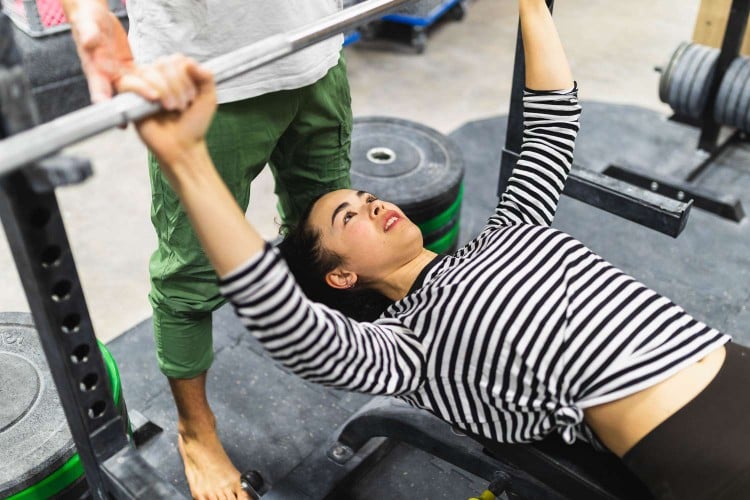Heavy or Light, All Weightlifting Builds Muscle
- All kinds of weightlifting—using heavy weights for fewer reps, or lighter weights for more reps—promotes muscle strength and mass, new research shows.
- Study authors say the findings should be applied to the general population, as many people "are inactive and have a lot of strength to gain."
- Overall, the hope is that the study will entice people to start lifting weights or engaging in other types of resistance training.

Diego Martin/Stocksy
If you want to gain muscle and strength by putting in as little effort as possible, researchers have good news: Any amount of resistance training can offer benefits.
That’s what a team concluded after analyzing nearly 200 studies measuring the effects of resistance training, also called strength training, on muscle strength and mass. The group found that this kind of exercise promoted both elements regardless of the intensity or frequency of workouts—though benefits increased with more exercise.
The meta-analysis was published in June in the British Journal of Sports Medicine.
Researchers hope the study's takeaway will entice people to start lifting weights or engage in other types of resistance training, given positive results could be seen no matter how intense the workout. “This approach to weight-lifting should be applied to the general population as the majority are inactive and have a lot of strength to gain,” registered kinesiologist Byron H. Washington II, RKT, MS, who specializes in the geriatric population and is unaffiliated with the research, told Health.
According to a 2018 study, only about 40% of adults do muscle-strengthening activities such as squats, push-ups, and bicep curls. That’s despite evidence that resistance exercises may do everything from improve physical function to reduce the risk of many chronic diseases, including type 2 diabetes, cancer, heart disease, stroke, and obesity.
Is Weight Training the Key to Lowering Blood Pressure in Adults?
Examining Weight, Reps, and Frequency
Research into the effects of strength training has lagged behind that of aerobic exercise by a couple of decades, Stuart Phillips, a kinesiologist at McMaster University and one of the study’s authors, told Health.
“I would say most of the recommendations personal trainers give are a holdover from something they were taught as part of the National Strength and Conditioning Association and around training athletes, which is different from training quote on quote ‘mere mortals,’” he said.
Despite the lag, Phillips's team believed enough information existed on resistance training that it was time to develop what he called an “optimal prescription.”
“That’s what this analysis does that no other analysis prior ours has ever tried to do," he added.
To develop that prescription, researchers analyzed 192 previous studies examining how upper-body, lower-body, or full-body resistance exercises affected more than 5,000 adults without chronic disease. They found that each variation of resistance training—using heavy or light weights, performing sets ranging from one to three, exercising once to three times weekly—increased strength and muscle mass.
However, the authors determined that certain factors resulted in even more improvement: People who used heavier weights got even stronger, and doing multiple sets increased muscle mass.
The researchers concluded that “regularly engaging” in any resistance training “is more important than trying to optimize” strength and muscle mass.
Although the study found that doing some exercise is better than doing none, the authors said this shouldn’t deter healthcare providers from promoting existing guidelines on muscle-strengthening activities, which recommend that healthy adults do such exercises at least two days a week.
Rather, their research also shows support for resistance training "at less than recommended often-cited levels,” the authors wrote.
Combining Strength Training and Cardio May Help You Live a Longer, Healthier Life
Workouts Can Be Simple
The study shows you don’t need to spend much money or have fancy supplies to do muscle-strengthening exercises, said Phillips.
“You can get lots of benefits using bodyweight exercises at home, and there are tons of free videos on YouTube,” he said, adding that resistance bands are another option for at-home workouts.
“For seniors or the general population that are just looking to be more active and healthy, a simple strength routine is very beneficial,” echoed Washington.
Bottom line: Whether you opt for lifting weights, carrying grocery bags, or doing lunges or squats, a little goes a long way when it comes to strengthening muscles.
